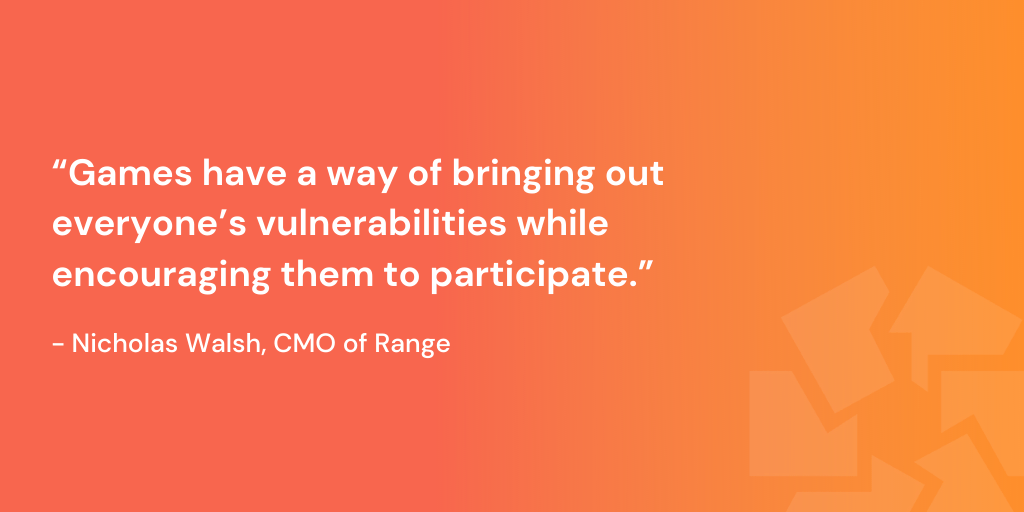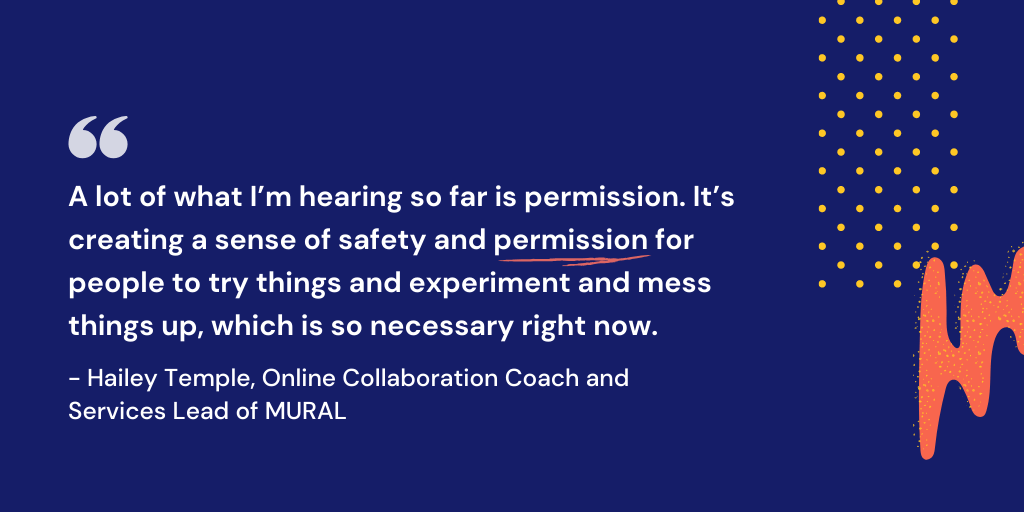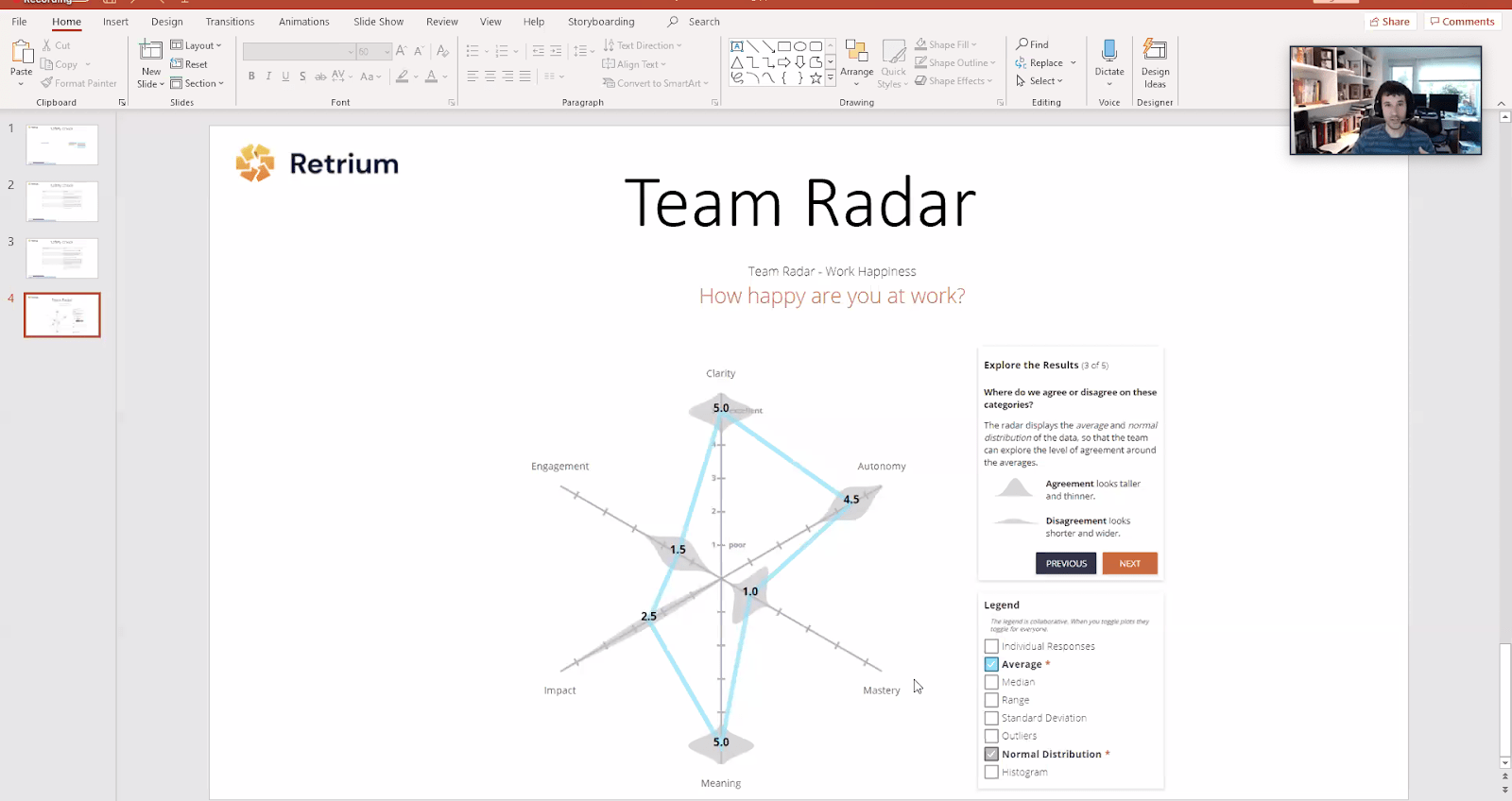Sprint planning. Product backlog refinement. Daily stand-ups. Sprint review. Demos. And then the retrospective.
How you adapt these practices to meet the needs of your suddenly distributed team can make the difference between daily success and just making it through another day on the calendar.
On April 30, four Agile and collaboration experts got together to share resources and discuss tools, unique challenges facing teams in the roundtable webinar, Suddenly Distributed: Tools for Effective Agile Teams. The panel included Hailey Temple of MURAL, Nicolas Walsh of Range, and Retrium’s CEO and co-founder, David Horowitz.
Co-presented by Agile Alliance and Retrium and moderated by Isaac Garcia from Coaching Agile Journeys, the panel discussed the behaviors and practices that will help us during these times, and the physical tools they’re using with their distributed teams.
Click here to see the chat transcript from the event.
Questions & Answers from the Webinar
Question: People in remote teams are feeling disconnected — leading to a breakdown in trust, lack of psychological safety, and vulnerability. So, how can we improve this?
David’s Answer: We’re all struggling in this together right now and I firmly believe Psychological safety begins at the top of the company and works its way down. During our previous webinar, Esther Derby said, “Psychological safety is not that you feel comfortable all of the time, it’s that you feel comfortable sharing things you’re uncomfortable about.” This resonated with me and got me thinking — how do you make people feel comfortable enough to talk about topics of discomfort and not fall victim to “watermelon status”? This fruit analogy describes an otherwise green, approachable looking conversation to be filled with red, metaphorically off-limit topics.
Handle this with something such as an Oops Wall to go from simply sharing mistakes to actually celebrating them. In a co-located office, an Oops wall can be a physical whiteboard, but in a remote setting a Slack channel titled “Oops Wall” would work great. If you’re missing that whiteboard feel, a solid tool to use is MURAL, an online whiteboard. Utilize these tools to encourage your team to be vulnerable and share the mistakes they make.
However, put aside tools for a moment. The difficulty of connecting with others while distributed is hard when you can’t have organic unintentional conversations. Create opportunities for the conversations you’d have in the co-located halls that you don’t get in the remote life. Do “opt-in” meetings where co-workers can join for fun and “hallway” style interactions or even eat lunch together.
Nick’s Answer: The first thing to remember is how strange all of this truly is. This is not “remote work”, this is working from home during a pandemic with kids home and all new schedules and it’s extremely challenging. The amount of background dissonance is a lot to deal with, making check-ins even more important. Be very intentional at the beginning of a meeting and do a round-robin to assess each team member’s mood. How someone slept, what their kids are doing, and other personal details such as that can have a big impact on their mood and it’s important to check in on that.
Ice breakers can vary from “how was your weekend” to “what is your method of handling stress.” Bring ice breakers into Slack using Slackbot or visit icebreaker.range.co to use the questions in your preferred setting.
Don’t underestimate the power of games. Whether it’s as simple as rock paper scissors on Zoom or a gaming tool such as Jackbox Games where real games like Drawful can engage team members and have fun.

Hailey’s Answer: It’s important to be both asynchronous and synchronous, and remember as Nick said, this is remote work — but not really. Establish rules of engagement for being either in or out of a meeting. A tool like MURAL can help establish the team norms and make rules of engagement clear. Utilize tools such as Lissette Sutherland’s Collaboration Super Cards to show when someone has a frozen screen with a simple photo of an ice cube that reads “frozen”. For ELMO or “Enough let’s move on”, it can be as simple as sending a picture of the Sesame Street character Elmo into the chat.

Question: Problem number two is a lack of engagement — we can see this from our team members and participants in a meeting. What are some ways and tools we can use to help keep them engaged?
Nick’s Answer: In order to really focus on your work and feel like you’re connected, it’s important to be mindful that this isn’t business as usual so you need to over-communicate — even when you think you’re over-communicating you probably aren’t because so many people are processing things. Be very intentional about engagement in every step and break it down to figure out how to engage people asynchronously versus synchronously. Synchronous meetings being a video meeting such as a webinar, while asynchronous meetings being when you’re working on your own and able to coordinate things.
Using Range to do asynchronous standups allows for five-minute check-ins in the morning to say what you did, what you’re doing, and then answer questions or share your mood. Figuring out a new way to engineer engagement and finding tools for asynchronous engagement is critical because it’s exhausting to be in meetings nonstop. A study from Stanford recently revealed that being able to focus and engage from looking at one another in the eyes is exhausting and takes more energy than we believe it does.
With that being said, thinking about different team updates and the ways in which you can bring thanks, call-outs, and kudos is very important to bring recognition to team members’ work. A kudos Slack channel or time spent at the end of a Friday meeting, recognizing anyone who deserves recognition will go a long way.
David’s Answer: I see engagement from two lenses: your own personal engagement in the team and then the sense of how engaged your team is with the work you’re doing. They are two different sides of a coin—but they’re different in terms of how they should be handled. If it’s your own personal engagement, run your own personal retrospectives and ask yourself “why do I not feel engaged?” Continue asking yourself why until you get to the root problem and see if you can take an incremental step to boost your engagement back into the workplace.
Keep in mind, some things are out of your control. We’re all going through difficult times right now and there are just no solutions to some of these issues, and accepting that is a way of getting your engagement back up. You start being less condescending towards yourself and more accepting of the reality that you’re in.
The other lens, from a tooling perspective, is how engaged is my team right now? One great way to figure that out is to run a Team Radar, which is essentially a spider diagram that can answer the questions you have about your team and allow you to easily get a sense of how they’re feeling.

Hailey’s Answer: It’s so important to tap into how team members are feeling, whether they’re afraid or worried about something else such as their loved ones at this point. As a manager, a Scrum Master, and just a person it’s so important to tap into that and address that challenge. This strange time in our lives is also a great time to assess how your team operates in terms of meeting and not meeting. The age-old joke of “that could’ve been an email” is being put to the test more than ever before. It’s time to figure out what interactions between your team can be a Slack message vs. an email or a virtual meeting.
When you’re face to face on camera, taking a moment to do meditation with one another is a great way to focus people. In addition to that, recognize distraction, and understand that behind each computer screen is a real person. At MURAL, a way to acknowledge the distraction and humanize it is by beginning a meeting by picking a vacation spot that one might imagine themself visiting, such as Bali. If they zone out during the meeting or are distracted, they might respond with “I’m sorry I was in Bali”. This recognition isn’t necessarily condoning distraction, but it lets team members know it’s okay and it happens to everyone.
Question: General meeting facilitation — for some reason all of these Zoom meetings we’re in don’t feel organized. Are meetings efficient? Are they relevant? We feel like we’re floating through time on a never-ending Zoom meeting. How do teams combat this problem?
Hailey’s Answer: I’ve definitely felt this pain! You’re in meetings for four hours straight and then you come out of it with no sense of where you are. Protect your time between meetings and ensure there is time for you to rest and change gears or to get coffee and use the restroom. You are a human and you need to treat yourself like one!
It’s important to go back to rituals and team culture and establish that it’s important to have a purpose to every meeting. It needs to be communicated that if there’s no outcome than there’s no meeting. It’s easier said than done, but if someone puts a meeting on your calendar ping them and ask what their purpose for this meeting is. It will trigger people to understand that a meeting with that person should have a purpose. Protecting your and your teammates’ time will make things more purposeful.
David’s Answer: Synchronous meetings are a privilege, not a right, making the bar for synchronous meetings higher. With that being said, asynchronous is the way to go. If you are having a synchronous meeting, bring clarity to why you’re there together and come up with a definition of done ahead of time.
There are advantages to using tools that make life easier in distributed meetings. Retrium is a prime example of that. Following the flow of a normal retrospective is hard to do in a remote setting, but having a tool that will help streamline the experience on its own.
Find tools that are first-class support for the meetings you’re trying to work on.
Nick’s Answer: Assess your meetings and how you’re running them and rethink your practices. This is because we’re developing new habits during this time and habits take a little while to get the hang of — whether it’s habits about how you engage with people asynchronously or how you’re conducting your meetings.
We use Range to structure and hold our meetings because there’s a spinner we can use so that everyone has to participate (round robin). Then there are standing built-in agenda items, but there is time built in at the end so that people can add agenda items. This is really crucial because it makes sure everyone knows they can participate and add something that is important to them.
Recommended Agile Tools For Remote Teams
The following tools came as recommendations from the webinar panelists and can be used to increase engagement and productivity, create psychological safety, ensure communication, and much more.
Slack: A collaboration tool that makes remote team communication simple and organized with all of your messaging, tools, and files in one place.
Donut: A Slack integration tool that makes it easy to build trust and friendship in remote settings through virtual coffee and lunch breaks.
Hallway.Chat: A tool designed to naturally create those hallway conversations you might be missing out on in a remote environment by scheduling breaks for your team to connect in timed video chats.
Zoom: Especially during times like these — where face-to-face interactions are put on hold — a video conferencing and screen sharing tool like Zoom has become imperative to maintain team connections.
MURAL: The perfect tool for all of the visual learners out there — it enables you to create a virtual whiteboard so teams can collaborate and solve various challenges no matter where they are in the world.
Collaboration Superpowers Supercards: Created by Agile expert Lissette Sutherland, these physical “supercards” make expressing thoughts during a video call as simple as holding up a flashcard.
Retrium: Utilizing the industry’s best practices, Retrium is a tool enabling teams to have engaging retrospectives while organizing retrospective documentation in one place.
Range: A thoughtfully designed tool that helps teams stay in sync and know what’s happening with daily check-ins, goal tracking, and meeting agenda creation.
Loom: A screen, video, and voice recording tool that makes it simple for users to clearly capture information and share their explanations.
Krisp: A noise-canceling app that easily mutes background noise in any communication app, all with the click of a button.
Video Facilitator: A tool that makes going from breakout room to breakout room easier, naturally supporting the breakout room flow.
Giphy for Slack: Though gifs should only be used in the right setting, when it is appropriate the Giphy plugin makes it easy to get your words across through the emotions of a gif.
Icebreaker: Created by Range, Ice Breaker holds over 300 free questions that are designed to build trust, psychological safety, and connectedness.
Google Docs: Often overlooked, it makes asynchronous collaboration simple with smart editing tools and built-in templates.
Jackbox Games: A variety of digital games available to play across different platforms, bringing games together no matter where they’re located.











